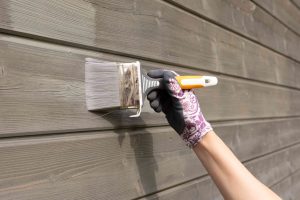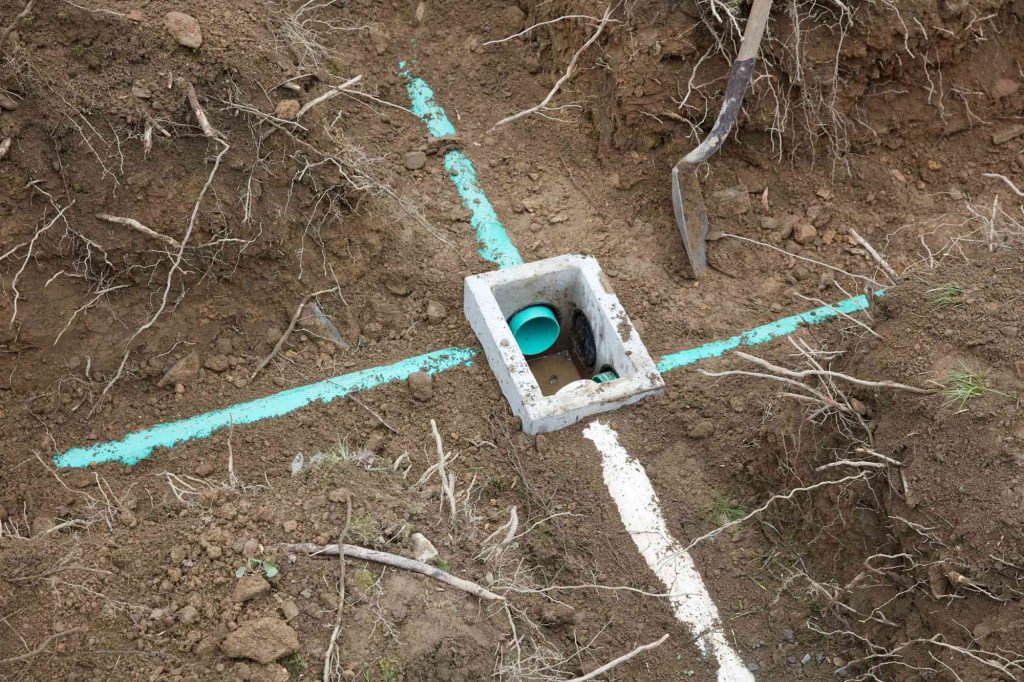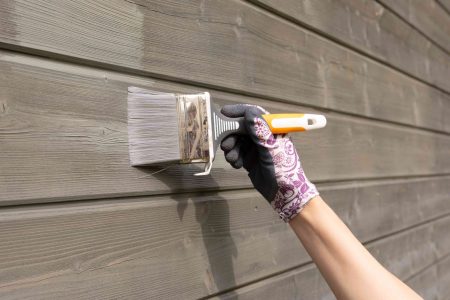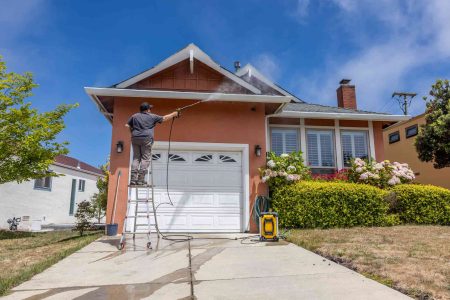If your home has a septic system, it has leach lines or a leach field. An essential component of all onsite wastewater systems, leach lines are the last step in a process that starts at your sink or toilet and ends with the wastewater being sent to the soil.
When the leach lines fail, the entire system fails. Knowing how to identify failing or failed leach lines might help you catch the problem in time and limit replacement costs.
How a Septic System Works
Septic systems are often called onsite wastewater management systems to distinguish them from municipal or public waste systems. That term—onsite—is key because a home’s septic system and a municipal system essentially do the same thing. Both systems treat the liquid waste or sewage—known as effluent—and render it harmless by killing its pathogens.
- Water from sinks, showers, and bathtubs, called greywater, as well as toilet liquid and solid waste exits the house through the sewer pipe.
- The sewer pipe moves the materials underground to the septic tank.
- The waste begins in the first compartment of the septic tank. Here, the heavy waste materials drift to the bottom and lighter materials such as oils and greases rise to form a layer of scum.
- Effluent moves through baffles and screens to the back compartment.
- Effluent moves through an effluent filter and into the leach lines, where it drains into the ground.
What Are Leach Lines?
Leach lines go by many names: leach field, leach bed, filter bed, or percolation bed. Leach lines disperse septic effluent into the ground after passing through the septic tank.
To broadcast the effluent over the widest possible area, leach pipes fan out across an open area, usually a backyard. After leaving the septic tank, the effluent passes into the leach pipes, trickles out of holes in the pipes, then percolates downward through gravel and sand, then into the soil.
Leach Line Percolation Rate
For a leach line to work properly, the liquid in the pipes needs to percolate (or, soak) into the soil at the correct rate.
If the liquid percolates 1-inch into the soil in less than five minutes, the liquid is moving downward too quickly to be treated. If the liquid drops 1-inch is about an hour or more, the liquid is moving too slowly and will flood the pipes and the ground.
Leach Field Pipes
Leach pipes are usually made of perforated PVC pipe. To encourage the final product to trickle into the soil, the pipes are bedded in gravel and sand or sometimes are covered with plastic septic chambers.
Signs of Failing or Failed Leach Lines
When a septic system fails, it can be difficult to pinpoint which part of the system has failed. Any of these signs can help you identify leach line failure as being the cause:
- Increased plant growth or greener grass than in other areas of the yard
- Drains in the house run slower
- Water in the house frequently backs up
- Yard is mushy or has standing water
- Sewage odors either inside or outside of the house
- Gurgling sounds
Why Leach Lines Fail
A home septic system is, in theory, a smart self-contained design that returns water to the earth and organically makes it safe. In practice, a septic system has so many moving parts that things can go wrong, and leach lines are often to blame.
If the septic tank was managed improperly, too much solid waste may have been allowed to move into the leach lines, blocking holes in the pipe or the surrounding ground. Other times, the pipes may have collapsed.
Lifespan of a Leach Line
Even without a catastrophic event, a leach field will eventually reach its natural end-of-life point. Even if the lines are well-maintained, microscopic debris will accumulate over the years and form a type of sludge that incoming liquids cannot push out.
A leach field lifespan is usually 15 to 25 years, though some estimates place it at 25 to 30 years. Leach lines that have been very well-maintained may last as long as 50 years.
How to Replace Leach Lines
- All of the components in the existing leach field must be torn out. Due to the widespread nature of leach fields, heavy equipment is needed for this step.
- A distribution box is installed near the septic tank. The distribution box receives effluent from the septic tank via one large pipe.
- Between four and nine lateral pipes run out of the distribution box and radiate outward in trenches to form the leach field. Since this is a gravity-based system, the lateral pipes must run at a downhill slope.
- Plastic septic chambers are placed over the leach line pipes.
- The trenches are filled with at least 6 inches of dirt or to the depth specified in your area. Select areas such as the ends of the pipes and the distribution box are kept visible for now.
- The septic system is inspected by the local permitting office.
- If the septic system passes inspection, the rest of the trenches are filled in.
Leach Line Safety Considerations
It’s important to prevent flooding in leach line systems for safety reasons.
Properly managed and maintained leach lines are safe for both residential and commercial use. But when the lines are not well-managed, this may cause groundwater or surface water contamination. Greenhouse gasses may be produced, as well.
When leach lines are flooded, the level of methane gasses is higher than in well-maintained lines that have not flooded. Though all leach fields do build up some methane gas, the problem with a flooded field is that the microbes don’t have sufficient time to consume the methane.
Read the full article here














